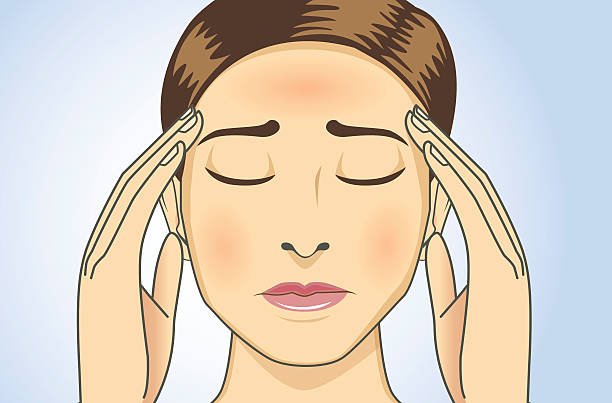There are a number of thoughts as to what causes a migraine headache, but no one knows definitively. It is believed to be caused by reactions in the central nervous system that lead to various effects in the body; among them inflammation of the blood vessels and nerves in the head.
But for now, let’s begin with the characteristics of migraines. Migraines have four stages: prodrome, aura, migraine attack, and postdrome.
The prodrome phase lasts anywhere from hours to days, and includes symptoms such as fatigue, nausea, sensitivity to light, muscle stiffness, irritability, and trouble sleeping to name a few.
The aura can range from several minutes to an hour, and only affects about 1/4 of all migraine suffers. It is a disturbance that may affect vision, other senses, and speech and occurs before or during a migraine. Visual disturbances during an aura can be spots, zigzags or crescents, flashes of light, and temporary partial or full visual loss.
The actual migraine attack is debilitating and can render a person helpless to do much else other than rest (or attempt to) for several hours or as long as three days. Common symptoms experienced during migraine attacks are icepick-like stabbing pains, throbbing, nausea, vomiting, and sensitivity to light and noise.
The postdrome phase of a migraine can last up to a couple days and is characterized by fatigue, depression or euphoria, inability to concentrate, and a lack of comprehension. I’ve heard postdrome describe as a migraine hangover.
The majority of migraines, also known as common migraines, do not include the aura stage and simply come on without warning.
Other types of migraines are classified as the following:
Migraines without head pain (also known as an aura without headache) – pretty self-explanatory, but this type includes all the symptoms of a normal migraine, but without the headache aspect.
Hemiplegic migraine – commonly mistaken for a stroke. Sufferers of hemiplegic migraines experience weakness, numbness, tingling, and visual disturbances on one side of the body. It can last a couple hours or a couple days, and does not always include head pain.
Retinal or ocular migraine – affects women more than men, and mostly during the childbearing years. It is characterized by temporary loss of vision in one eye that lasts as little as minutes or as long as multiple days. This migraine is unique in that it can simply be the aura of a more serious migraine, or it won’t progress beyond the vision loss. I have a family member who experiences retinal migraines, and from her experience it seems to mimic the migraine without headache, but with a more debilitating aura.
Chronic migraine – when you experience a migraine for 15 or more days a month, it is classified as a chronic migraine. These can be mistaken for sinus headaches or tension headaches, and the headache intensity can vary from day to day.
What can be done if you have migraines?
From a chiropractic standpoint, there might be a cause worth talking about, and it is something that has actually been known by chiropractors for over 120 years.
When you experience a trauma of any kind, be it the birth process, falling down as a toddler, slipping on ice, falling off a horse, or being involved in a car accident, oftentimes the top vertebra in our spine, atlas or C1, can be jarred from its normal position.
This vertebra is the only one in the entire spine not connected by discs to the C2 vertebra below, also known as the axis. It is held in place by ligaments and tendons alone. In the case of an injury, these ligaments and tendons can be stretched to make way for the C1′s new position.
Sitting just above the atlas is the brain stem, which is essentially where the spinal cord meets the brain. The brain stem is the part of your nervous system that controls and regulates all of your necessary and vital organ functions; things like breathing, heart beat, blood pressure, coordination, balance, immune system.
When the atlas has displaced ever so slightly into the spinal canal, this added stress and tension disrupts the quality of communication between the nervous system and the rest of the body.
Upper cervical chiropractic care is a very gentle and specific form of chiropractic that specifically address these vertebral misalignments. Removing these misalignments ensures proper flow of communication between the nervous system and the rest of the body, also diminishing those migraine headaches to virtually nothing in some cases.
More from the Harshē Chiropractic Blog by Dr. Brandon Harshe












